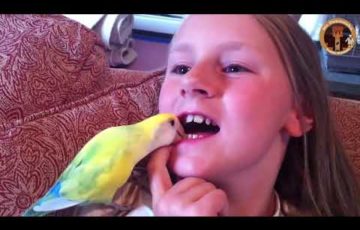https://www.youtube.com/watch?v=9pxw56Zf3iI
Baby Reptiles – Cute and Funny Reptile Videos Compilation (2018) Reptiles Adorables Video Recopilacin | Animal Planet Videos Subscribe Here: https://goo.gl/qor4XN Get the new LED Purge Mask for Halloween!! 10% Off Promo Code: ANIMAL10 https://www.ledpurgemask.com/products/led-purge-mask 2nd Channel Here: https://goo.gl/SCE4Z9Baby reptiles are cute and funny. Baby reptiles are awesome. Check out these cute baby reptiles and funny baby reptiles in this cute and funny baby reptiles videos compilation.Los reptiles bebes son lindos y adorables. Los reptiles bebes son increbles. Vea esta divertida recopilacin graciosa de vdeos de reptiles bebes. VIDEO PLAYLISTS CATS https://goo.gl/Fn5hjw DOGS https://goo.gl/Ytjqj2 OWLS https://goo.gl/hdMX44 PANDAS https://goo.gl/VvSvW7 TURTLES https://goo.gl/ZZeD4W ANIMALS https://goo.gl/UzfEuX PARROTS https://goo.gl/8P8m9v REPTILES https://goo.gl/B1mNe9 MINI PIGS https://goo.gl/HooE6u MONKEYS https://goo.gl/ysT6w5 HEDGEHOG https://goo.gl/AM4JvA RACCOONS https://goo.gl/39tNed OCEAN LIFE https://goo.gl/q8izcp GUINEA PIGS https://goo.gl/rtVDkv BABY ANIMALS https://goo.gl/At6vs2 WILD ANIMALS https://goo.gl/25ZbvD NATURE IS AWESOME https://goo.gl/ViLfFF ANIMALS DOING THINGS https://goo.gl/ea14RnReptiles are tetrapod animals in the class Reptilia, comprising today’s turtles, crocodilians, snakes, amphisbaenians, lizards, tuatara, and their extinct relatives. The study of these traditional reptile orders, historically combined with that of modern amphibians, is called herpetology.Because some reptiles are more closely related to birds than they are to other reptiles (e.g., crocodiles are more closely related to birds than they are to lizards), the traditional groups of “reptiles” listed above do not together constitute a monophyletic grouping (or clade). For this reason, many modern scientists prefer to consider the birds part of Reptilia as well, thereby making Reptilia a monophyletic class.The earliest known proto-reptiles originated around 312 million years ago during the Carboniferous period, having evolved from advanced reptiliomorph tetrapods that became increasingly adapted to life on dry land. Some early examples include the lizard-like Hylonomus and Casineria. In addition to the living reptiles, there are many diverse groups that are now extinct, in some cases due to mass extinction events. In particular, the CretaceousPaleogene extinction event wiped out the pterosaurs, plesiosaurs, ornithischians, and sauropods, as well as many species of theropods, including troodontids, dromaeosaurids, tyrannosaurids, and abelisaurids, along with many Crocodyliformes, and squamates (e.g. mosasaurids).Modern non-avian reptiles inhabit every continent with the exception of Antarctica. (If birds are classed as reptiles, then all continents are inhabited.) Several living subgroups are recognized: Testudines (turtles and tortoises), approximately 400 species; Rhynchocephalia (tuatara from New Zealand), 1 species; Squamata (lizards, snakes, and worm lizards), over 9,600 species; Crocodilia (crocodiles, gavials, caimans, and alligators), 25 species; and Aves (birds), 10,000 species.Reptiles are tetrapod vertebrates, creatures that either have four limbs or, like snakes, are descended from four-limbed ancestors. Unlike amphibians, reptiles do not have an aquatic larval stage. Most reptiles are oviparous, although several species of squamates are viviparous, as were some extinct aquatic cladesthe fetus develops within the mother, contained in a placenta rather than an eggshell. As amniotes, reptile eggs are surrounded by membranes for protection and transport, which adapt them to reproduction on dry land. Many of the viviparous species feed their fetuses through various forms of placenta analogous to those of mammals, with some providing initial care for their hatchlings. Extant reptiles range in size from a tiny gecko, Sphaerodactylus ariasae, which can grow up to 17 mm (0.7 in) to the saltwater crocodile, Crocodylus porosus, which may reach 6 m (19.7 ft) in length and weigh over 1,000 kg (2,200 lb). – XYZ – XYZ











最近のコメント